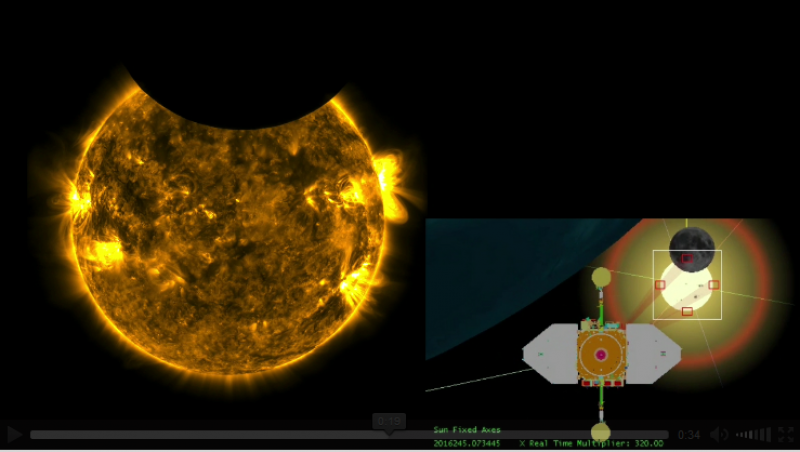Early in the morning of Sept. 1, 2016, NASA’s Solar Dynamics Observatory, or SDO, caught both the Earth and moon crossing in front of the sun. SDO keeps a constant eye on the sun, but during SDO’s semiannual eclipse seasons, Earth briefly blocks SDO’s line of sight each day – a consequence of SDO’s geosynchronous orbit. On Sept. 1, Earth completely eclipsed the sun from SDO’s perspective just as the moon began its journey across the face of the sun. The end of the Earth eclipse happened just in time for SDO to catch the final stages of the lunar transit.
In the SDO data, you can tell Earth and the moon’s shadows apart by their edges: Earth’s is fuzzy, while the moon’s is sharp and distinct. This is because Earth’s atmosphere absorbs some of the sun’s light, creating an ill-defined edge. On the other hand, the moon has no atmosphere, producing a crisp horizon.
See the video here: http://svs.gsfc.nasa.gov/12292#42786
